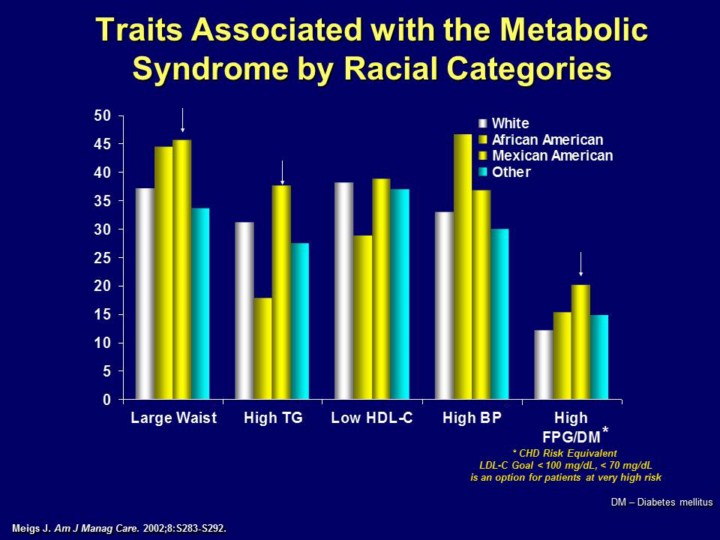| front |1 |2 |3 |4 |5 |6 |7 |8 |9 |10 |11 |12 |13 |14 |15 |16 |17 |18 |19 |20 |21 |22 |23 |24 |25 |26 |27 |28 |29 |30 |31 |32 |33 |34 |35 |36 |37 |38 |39 |40 |41 |42 |43 |44 |45 |46 |47 |48 |49 |50 |51 |52 |53 |54 |55 |review |
 |
Age-adjusted prevalence of traits consistent with the metabolic syndrome are shown on the current slide.
The age-adjusted prevalence of traits consistent with the metabolic syndrome show a substantial heterogeneity among racial and ethnic categories. For example, a large waist circumference and high triglycerides are common in Mexican-Americans versus non-Hispanic whites.1
Therefore it is important for clinicians to understand the traits associated with the metabolic syndrome to assist them in accurately diagnosing and controlling the components that make up this condition (eg, dyslipidemia).
Reference: 1. Meigs J. Epidemiology of the metabolic syndrome 2002 Am J Manag Care. 2002;8:S283-S292. |